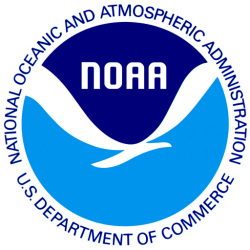Microsoft and NOAA collaborate to enable data access and innovation across government and industry

As the U.S. National Oceanic and Atmospheric Administration (NOAA) works to fulfill its mission—to understand and predict changes in the Earth’s environment and to conserve and manage coastal and marine resources—it collects a lot of data. In fact, NOAA gathers more than 20 terabytes of data every day—more than twice the data of the entire print collection of the U.S. Library of Congress.
However, only a small percentage of that data is accessible. Because of increasing demand for access, NOAA pursued the ability to extend its data to the cloud with proximate compute, network, and storage capabilities so that government, businesses and the general public could not only tap into NOAA’s data, but also explore and innovate using complex predictive models and analysis.
Today, I’m proud to announce Microsoft’s participation in the Cooperative Research & Development Agreement (CRADA) as an anchor collaborator with NOAA. As part of this collaboration, Microsoft will host weather, water, ocean, and climate data provided by NOAA scientists on the Microsoft Azure Government cloud platform. We will host such well-known NOAA datasets as the Global Forecast System, Global Ensemble Forecast System, and Climate Forecast System. We also look forward to working with NOAA and our partners in government and industry to identify and expose other datasets of interest.
The NOAA CRADA takes a significant step toward realizing the promise of open data. Combined with the massive amount of data available from NOAA, it will allow many segments of government and private industry to take advantage of Azure Government to improve applications and develop new solutions for citizens and customers.
Public agencies and their partners will be able to use the data to develop mission-critical applications. For example, state healthcare organizations could better predict the spread of infectious diseases and federal agencies could more accurately model the impact of climate change.
Industry, too, can capitalize on this access. For example, AccuWeather provides weather forecasts to more than 1 billion devices in people’s hands every day. From its hyperlocal AccuWeather MinuteCast®, minute-by-minute precipitation forecasts, to its hourly and 45-day extended forecasts, AccuWeather will increase its speed of delivery and enhance its forecasting insights by combining NOAA’s big data access with predictive analytics from Azure Government.
We believe that opening the door to one of the world’s most valued data resources through Azure Government will speed the rate of innovation and create new insights that will positively affect the lives of millions, so we are enthusiastic about inviting government and private industry to tap into the immense value of NOAA’s data. The ultimate goal of this cooperative effort is to foster innovation from a rich community of researchers and other partners. We will also actively request research submissions through our Azure for Research Program, which will make large allocations of Azure available for those with accepted proposals, and we will aggressively build a community of data alliance partners.
We are pleased with the early interest and partner engagements already in progress and are eager for more, so we encourage others who are interested to contact us directly at AzureGov@Microsoft.com.
Chris Niehaus, senior director of National Cloud Programs, Microsoft




